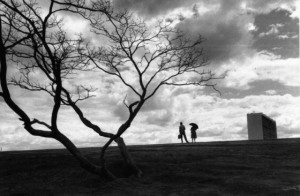Baron Georges Haussmann is one of the most influential urban planners of the 19th century. During the reign of Napoleon III, Haussmann transformed Paris from a disorganized medieval city to a modern legible city that was the envy of Europe. Many of Haussmann’s improvements in Paris were designed to protect his Emperor’s capital from rebellion. He also wanted to satisfy wealthy industrialists that sought to improve trade by better connecting Paris with the railway and thereby other of France’s industrial centres. The Baron accomplished this feat by entirely reorganizing the city’s medieval system of highways, both, within the city, as well as, those leading into and out of Paris. In terms of security, many of the complaints that had been leveled by the police and military were solved firstly by removing the slums and secondly by widening or removing many of Paris’s narrow streets. The wider streets facilitating the use of cavalry and artillery in case Parisians once again chose to riot in the streets of their city.
In spite of the fact that the majority of Haussmann’s plans for the redevelopment of Paris were designed to allow the rapid movement of men and materials around the city of Paris, its citizens were not forgotten and those who were not displaced by the changes made to the city, enjoyed improvements in sewer and drainage systems. When Napoleon was forced to dismiss Haussmann from his post in January of 1870, he had been Prefect of the Seine for seventeen years. Always the cunning and ruthless politician, it seems that Haussmann had simply made too many enemies for the Emperor to continue to protect him.


